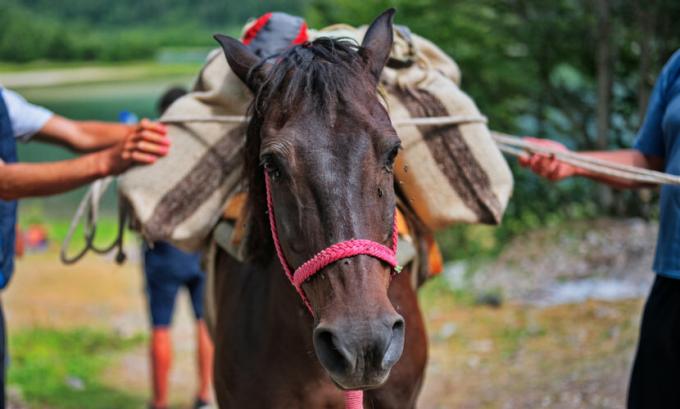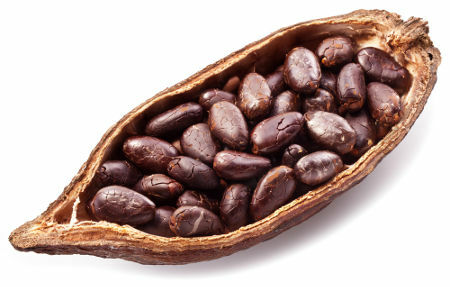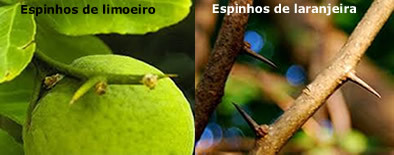horses they are mammalsherbivores included in the genus Equus, the same genus as zebras and donkeys. These animals are widely used by human beings, and their use as pack animals, in livestock management and even in the production of serums is widespread. Although there is much disagreement about when the domestication of these animals took place, it is believed that the first domestications of horses took place around 3000 BC. C., in Central Asia.
Read more: The importance of animals to humans
Horse summary
They are mammalian animals belonging to the genus Equus.
They are not herbivorous animals ruminants.
They are animals that have a hoof, a long and large head and eyes turned to the sides.
Its domestication was quite important in our history.
They are used in the transport of people and cargo, in handling livestock, in the production of serums and even in therapies carried out with people with a disability.
They arrived in Brazil in the year 1549.
General characteristics of horses
Horses are animals belonging to the
genre Equus,same genus as zebras and donkeys. They stand out for having hoove, long and large head, eyes located more laterally on the head and dentition compatible with herbivorous feeding. the horses own tail and mane.Horses can show from 1,50 m to 1.60 m tall and weigh between 330 kg and 550 kg. These measurements, however, may vary between different breeds of domestic horses and also between the domestic horse (equus ferus caballus) and the wild (Equus ferus przewalskii). We must also mention the ponies, which can be defined as horses of small stature. These animals, when adults, have a maximum of 1.47 m.

Horses also show a lot of variation in terms of coat color. Some horses have a single color on their body, others, however, have fur of two or three different colors.
Horses, due to their domestication, are spread all over the world. In Brazil there are different breeds of horse. Some of them are: çrioulo, mangalarga, brazilian-de-Hipismo and pantaneiro.
The mare has a gestation that varies according to the animal she has mated. If she is pregnant with a donkey, gestation lasts from 360 to 375 days. When the mare is pregnant with a horse, the period is shorter, from 335 to 345 days. When she is pregnant with a donkey, she can give birth to a donkey (male) or a mule (female). When a horse crosses a donkey, the calf formed is called a barroto.
A curiosity about horses is the fact that they are able to sleep standing up. For that, they lock your knees. Sleeping standing up is an important action as it allows them to be able to flee quickly when they sense danger.
Read too:seahorsethe — understand why this fish has that name
horse feed
horses are herbivorous animals, that is, they feed on vegetables. They have a digestive system adapted to diets rich in fiber, being able to meet most of their nutritional needs through the ingestion of grasses. Horses take their food using their tongue and lips and using their incisor teeth to cut it. Contrary to what many people think, horses are not ruminant animals.
Wild horses
Currently, the existing wild horses are part of the speciesEquus ferus przewalskii. These horses, also known as przewalski's horse, are characterized by being smallerare you that thes horses domestics, the female being smaller than the male. The male is between 1.38 m and 1.46 m in height, while the females are from 1.33 m to 1.39 m. The mane of the Przewalski horse is short and erect, while the forelock is almost non-existent. In winter, the mane is thicker, being eliminated in spring with the rest of its winter coat.
According to the International Union for Conservation of Nature (IUCN), the Przewalski horse can be found in China and Mongolia. This species inhabited steppes and inhabitst semi-desert, however, due to the loss of its habitat, is found only in semi-desert areas today. Despite the current trend of the population to increase, the species is classified as “threatened” by the IUCN.
Read too: Domestic and wild animals
Arrival of horses in Brazil
The horses arrived in Brazil in the year 1549. On that occasion, the first governor-general, Tomé de Souza, ordered some animals to come from Cape Verde to Bahia. They were brought in on the Galga caravel.
Use of horses by humans
Horses are extremely important animals for men, being considered fundamental in the construction of our history. These animals became means of locomotion essential in people's daily lives, helping them to move from one region to another. In addition, they help the population in cargo transport, since they are very strong mammals. In the past, horses were used during battles, ensuring the rapid transport of soldiers, in addition to the transport of supplies and weapons.

With technological advances, such as the appearance of cars, horses are no longer used as much, however, they are still part of our history, being, for example, used in cargo transport in various regions. It is noteworthy that the role of horses for humanity is far from just transporting and carrying loads.
Nowadays, horses are used, for example, in therapies aimed at the biopsychosocial development of people with disabilities — it is about hippotherapy. We must also mention the equestrianism, a sport practiced with the horse that involves different modalities. Currently, equestrianism is one of the Olympic sports.
Horses are also used in production of serums, such as the antivenin serum. The snake's venom is inoculated into the horse, and after some time, part of the horse's blood is removed, and the blood plasma is processed. In this plasma, there are antibodies, which will help in the treatment of people bitten by snakes.



